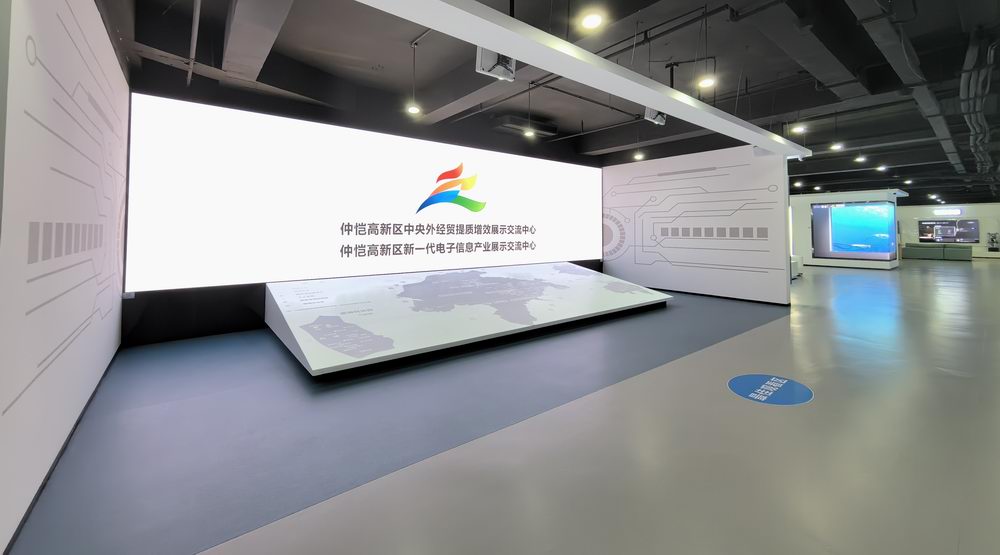Five Key Strategies for Industry-Academia Partnerships

Industry-academia partnerships are essential for driving innovation and economic growth. These collaborations have more than doubled recently, underscoring their growing significance. However, forming effective partnerships can be challenging due to misaligned goals and communication barriers. The Industry-Academia-Research Integration Base addresses these issues by supporting industry clusters. This base provides a collaborative platform, fostering mutual benefits. Companies that partner with academic institutions can innovate more effectively. The Huizhou Zhongkai High-tech Zone National Foreign Trade Transformation and Upgrading Base (Electronic Information) Cloud Platform exemplifies this support, assisting enterprises in the Zhongkai High-tech Zone and boosting their development.
Identifying Challenges in Industry-Academia Partnerships
Misalignment of Goals
Different Priorities
Industry and academia often have different priorities. Companies focus on immediate results and profits. Academic institutions prioritize research and education. This difference can create tension. Both sides need to understand each other's goals. A shared vision can lead to success. Without it, partnerships may struggle.
Communication Barriers
Communication barriers can hinder progress. Industry professionals use business jargon. Academics speak in technical terms. Misunderstandings can arise. Regular meetings help bridge this gap. Open dialogue fosters collaboration. Effective communication leads to better outcomes.
Resource Constraints
Funding Limitations
Funding limitations pose a significant challenge. Companies face budget constraints. Academic institutions rely on grants. Limited resources affect project scope. Joint funding opportunities can provide solutions. Grants and sponsorships offer financial support. Collaboration can unlock new possibilities.
Time and Personnel Constraints
Time and personnel constraints also impact partnerships. Companies operate on tight schedules. Academic projects require extensive research. Balancing these demands is crucial. Shared resources can ease the burden. Collaborative efforts maximize efficiency. Partnerships thrive with proper resource management.
Intellectual Property Concerns
Ownership Issues
Ownership issues often arise in collaborations. Companies seek exclusive rights. Academic institutions value open access. Clear agreements prevent conflicts. Contractual clarity ensures mutual understanding. Predefined terms protect both parties' interests.
Licensing and Commercialization
Licensing and commercialization present additional challenges. Companies aim for profitable ventures. Academic institutions focus on knowledge dissemination. Fair licensing practices benefit both sides. Equitable distribution promotes trust. Transparent processes encourage ongoing collaboration.
The Huizhou Zhongkai High-tech Zone National Foreign Trade Transformation and Upgrading Base (Electronic Information) Cloud Platform plays a vital role here. This platform supports enterprises in the Zhongkai High-tech Zone. It offers resources and guidance. Companies gain access to cutting-edge technology. The platform helps overcome challenges in partnerships. Businesses experience growth and innovation.
Strategy 1: Establishing Clear Objectives
Aligning Goals
Mutual Benefits
Successful partnerships start with aligning goals. Companies and academic institutions often have different objectives, but finding common ground is crucial. Researchers highlight the need to understand the nature of partnerships. A variety of interactions can achieve different objectives. This approach allows partners to make informed decisions. The Zhongkai High-tech Zone National Foreign Trade Transformation and Upgrading Base (Electronic Information) Cloud Platform exemplifies this by supporting enterprises in achieving mutual benefits. Businesses in the zone gain access to resources that drive innovation and growth.
Long-term Vision
A long-term vision ensures sustainability. Partnerships should focus on future outcomes rather than immediate gains. Strategic Partnerships experts emphasize agreeing on measurable objectives. Even if partners have different goals, collaboration can help achieve them. The cloud platform in Zhongkai High-tech Zone assists companies in planning for the future. Access to cutting-edge technology and support fosters a forward-thinking approach.
Defining Success Metrics
Measurable Outcomes
Defining success metrics keeps partnerships on track. Clear objectives lead to measurable outcomes. Partnerships Managers stress the importance of articulating the vision and value of a partnership. Stakeholders need to understand what success looks like. The cloud platform provides tools for tracking progress. Enterprises can measure growth and innovation effectively.
Regular Evaluations
Regular evaluations ensure continuous improvement. Partnerships benefit from ongoing assessments of their success metrics. Leadership and Partnerships experts note that investing in leadership skills and measuring results is vital. The cloud platform offers guidance and resources for regular evaluations. Companies in the Zhongkai High-tech Zone can adapt and evolve, ensuring sustained success.
Strategy 2: Enhancing Communication

Effective communication forms the backbone of successful industry-academia partnerships. Let's dive into some practical ways to enhance this vital aspect.
Regular Meetings
Scheduled Updates
Regular meetings keep everyone on the same page. Companies and academic institutions benefit from scheduled updates. These updates ensure that all parties stay informed about progress and challenges. Consistent communication helps avoid misunderstandings and keeps projects on track.
Feedback Mechanisms
Feedback mechanisms play a crucial role in improving collaboration. Open channels for feedback allow partners to address concerns promptly. Constructive feedback fosters a culture of continuous improvement. Both sides can adapt and refine their approaches, leading to more effective partnerships.
Collaborative Platforms
Digital Tools
Digital tools revolutionize how partners communicate. Platforms like video conferencing and project management software facilitate seamless interaction. These tools break down geographical barriers and enable real-time collaboration. Partners can share ideas and resources effortlessly.
Shared Resources
Shared resources enhance the efficiency of partnerships. Access to common databases and research materials accelerates progress. The Huizhou Zhongkai High-tech Zone National Foreign Trade Transformation and Upgrading Base (Electronic Information) Cloud Platform exemplifies this support. Enterprises in the zone gain access to cutting-edge technology and shared knowledge, boosting development and innovation.
By focusing on these communication strategies, industry and academia can build stronger, more productive partnerships.
Strategy 3: Leveraging Resources
Industry-academia partnerships can thrive by leveraging resources effectively. This strategy focuses on maximizing the potential of both partners through joint funding opportunities and shared infrastructure. Let's explore how these elements contribute to successful collaborations.
Joint Funding Opportunities
Grants and Sponsorships
Grants and sponsorships offer vital financial support for partnerships. Companies and academic institutions can apply for grants together. This collaboration increases the chances of securing funds. Sponsorships from industry players provide additional resources. These funds fuel research and innovation, driving projects forward.
Shared Investments
Shared investments create a win-win situation for both parties. Companies and universities pool resources for mutual benefit. This approach reduces individual financial burdens. Shared investments also foster a sense of ownership and commitment. Partners work together towards common goals, enhancing collaboration.
Shared Infrastructure
Facilities and Equipment
Access to shared facilities and equipment boosts efficiency. Companies and academic institutions can use each other's resources. This access reduces costs and accelerates progress. The Huizhou Zhongkai High-tech Zone National Foreign Trade Transformation and Upgrading Base (Electronic Information) Cloud Platform exemplifies this support. Enterprises in the zone gain access to cutting-edge technology, enhancing their capabilities.
Human Resources
Human resources play a crucial role in successful partnerships. Companies and academic institutions can share expertise and personnel. This collaboration maximizes talent utilization. Shared human resources lead to innovative solutions and improved outcomes. The cloud platform in Zhongkai High-tech Zone supports this by connecting enterprises with skilled professionals.
Leveraging resources effectively strengthens industry-academia partnerships. By focusing on joint funding opportunities and shared infrastructure, partners can achieve remarkable success. The Huizhou Zhongkai High-tech Zone National Foreign Trade Transformation and Upgrading Base (Electronic Information) Cloud Platform stands as a testament to the power of collaboration.
Strategy 4: Addressing Intellectual Property
Navigating intellectual property (IP) can feel like a maze. Industry-academia partnerships need clear agreements and fair licensing practices to thrive. Let's break it down.
Clear Agreements
Contractual Clarity
Contracts should spell out every detail. Partners must know their rights and responsibilities. A Partnership Agreement lays the groundwork. This document provides legal protection and clarity. Everyone knows what to expect, which prevents disputes. The Huizhou Zhongkai High-tech Zone National Foreign Trade Transformation and Upgrading Base (Electronic Information) Cloud Platform offers guidance on crafting these agreements. Companies in the zone gain confidence, knowing their interests are safeguarded.
Predefined Terms
Predefined terms keep things smooth. Partners agree on IP ownership from the start. An IP Assignment and Confidentiality Agreement transfers ownership of created IP. Businesses retain control, and confidential information stays safe. This clarity fosters trust and collaboration. Enterprises in the Zhongkai High-tech Zone benefit from this structured approach, driving innovation without legal hiccups.
Fair Licensing Practices
Equitable Distribution
Equitable distribution ensures fairness. Both sides share the benefits of collaboration. Licensing agreements should reflect this balance. Companies and academic institutions must feel valued. The cloud platform supports enterprises by offering resources for creating fair agreements. Businesses in the zone experience growth through shared success.
Transparent Processes
Transparency builds trust. Licensing processes should be open and clear. Partners need to understand how decisions are made. Transparent practices encourage ongoing collaboration. The Zhongkai High-tech Zone platform helps companies navigate these waters. Access to cutting-edge technology and shared knowledge empowers businesses, leading to sustainable development.
By focusing on clear agreements and fair licensing, industry-academia partnerships can flourish. The supportive role of the Huizhou Zhongkai High-tech Zone National Foreign Trade Transformation and Upgrading Base (Electronic Information) Cloud Platform is vital. Enterprises in the zone find the tools they need to innovate and grow.
Strategy 5: Building Long-term Relationships

Building long-term relationships in industry-academia partnerships requires a focus on trust and continuous engagement. These elements create a solid foundation for collaboration and innovation.
Trust and Transparency
Open Communication
Open communication forms the backbone of trust. Partners need to share information freely. This openness prevents misunderstandings and builds confidence. The Huizhou Zhongkai High-tech Zone National Foreign Trade Transformation and Upgrading Base (Electronic Information) Cloud Platform encourages open dialogue among enterprises. Companies in the zone benefit from shared insights and experiences, fostering a collaborative environment.
Honesty in Dealings
Honesty in dealings strengthens partnerships. Businesses must act with integrity. Transparent actions build credibility and respect. Connor Blakley, a strategic partnership expert, highlights that brand trust grows from good business relationships. When companies see honest interactions, they become more willing to support each other. The cloud platform in Zhongkai High-tech Zone supports this by promoting ethical practices. Enterprises gain trust from partners and consumers alike.
Continuous Engagement
Regular Collaborations
Regular collaborations keep partnerships active. Consistent joint efforts lead to ongoing success. Companies and academic institutions should work together frequently. This collaboration ensures that projects remain relevant and impactful. The cloud platform offers resources for continuous engagement. Businesses in the zone experience growth through sustained partnerships.
Networking Opportunities
Networking opportunities expand connections. Meeting new people opens doors to potential collaborations. Partnerships help businesses connect with others who can support growth. The Zhongkai High-tech Zone platform provides networking events and forums. Enterprises gain access to a broader network, enhancing their development prospects.
Long-term relationships thrive on trust and continuous engagement. The supportive role of the Huizhou Zhongkai High-tech Zone National Foreign Trade Transformation and Upgrading Base (Electronic Information) Cloud Platform is crucial. Companies in the zone find the tools they need to build lasting partnerships and drive innovation.
Industry-Academia-Research Integration Base
The Industry-Academia-Research Integration Base stands as a beacon for collaboration. This base plays a pivotal role in supporting industry clusters. Companies and academic institutions find a fertile ground for innovation here. The Huizhou Zhongkai High-tech Zone National Foreign Trade Transformation and Upgrading Base (Electronic Information) Cloud Platform exemplifies this integration. Enterprises in the Zhongkai High-tech Zone benefit immensely from this supportive environment.
Supporting Industry Cluster
Collaborative Ecosystems
Collaborative ecosystems thrive within the Industry-Academia-Research Integration Base. Companies and academic institutions work hand-in-hand. This partnership fosters knowledge co-creation and technology transfer. Businesses gain insights that propel innovation. Academic research provides a competitive edge. New ideas flourish, leading to economic growth. The cloud platform offers resources that enhance these collaborations. Enterprises in the zone experience accelerated development.
Innovation Hubs
Innovation hubs serve as the heart of creativity. The Industry-Academia-Research Integration Base nurtures these hubs. Companies and academic institutions converge to solve grand challenges. Multidisciplinary research takes center stage. New knowledge emerges across various domains. The cloud platform supports this dynamic environment. Enterprises access cutting-edge technology and shared expertise. Growth becomes a natural outcome of this synergy.
The Industry-Academia-Research Integration Base, with the support of the Huizhou Zhongkai High-tech Zone National Foreign Trade Transformation and Upgrading Base (Electronic Information) Cloud Platform, empowers enterprises. Companies in the Zhongkai High-tech Zone find the tools they need to innovate and succeed.
Strategic partnerships drive innovation and growth. Implementing the outlined strategies can unlock numerous benefits. Businesses can expand capabilities, reach new markets, and enhance customer experiences. The Huizhou Zhongkai High-tech Zone National Foreign Trade Transformation and Upgrading Base (Electronic Information) Cloud Platform plays a crucial role. This platform provides essential support for enterprises in the Zhongkai High-tech Zone. Companies gain access to cutting-edge technology and resources. Future collaborations between industry and academia hold immense potential. Embracing these partnerships will lead to sustained success and innovation.
See Also
Innovating Industry Growth with Huizhou Zhongkai
Fostering Collaboration and Innovation at Huizhou Zhongkai High-tech Zone
Maximizing Growth Potential through High-tech Zones
Zhongkai High tech Zone National foreign trade transformation and Upgradi Base(Electronic Information)Cloud Platform.
Address: Zhongkai High-tech Zone,Huizhou City ,Guangdong,China
E-mail: huizhoueii@163.com 13510001271@163.com
Tel: +86-0752-3279220 Mobile: +86-13510001271


